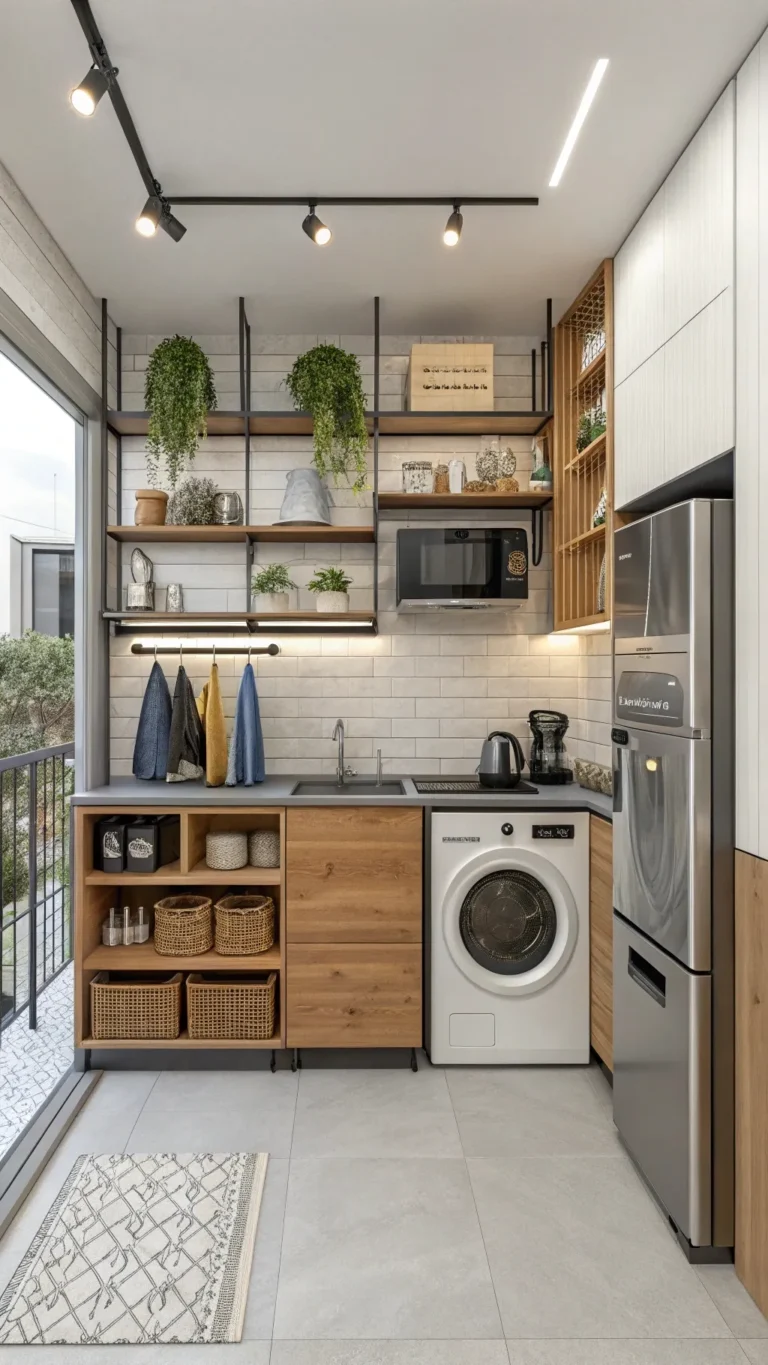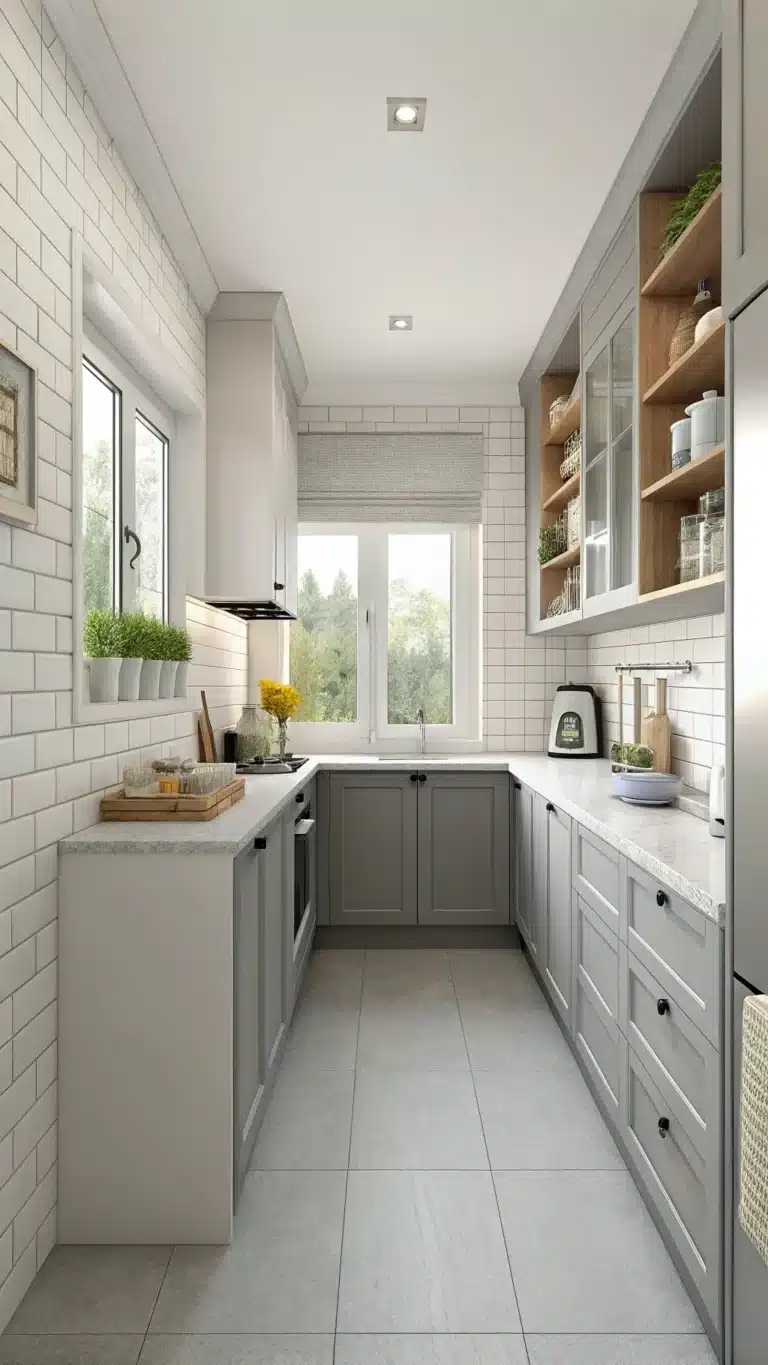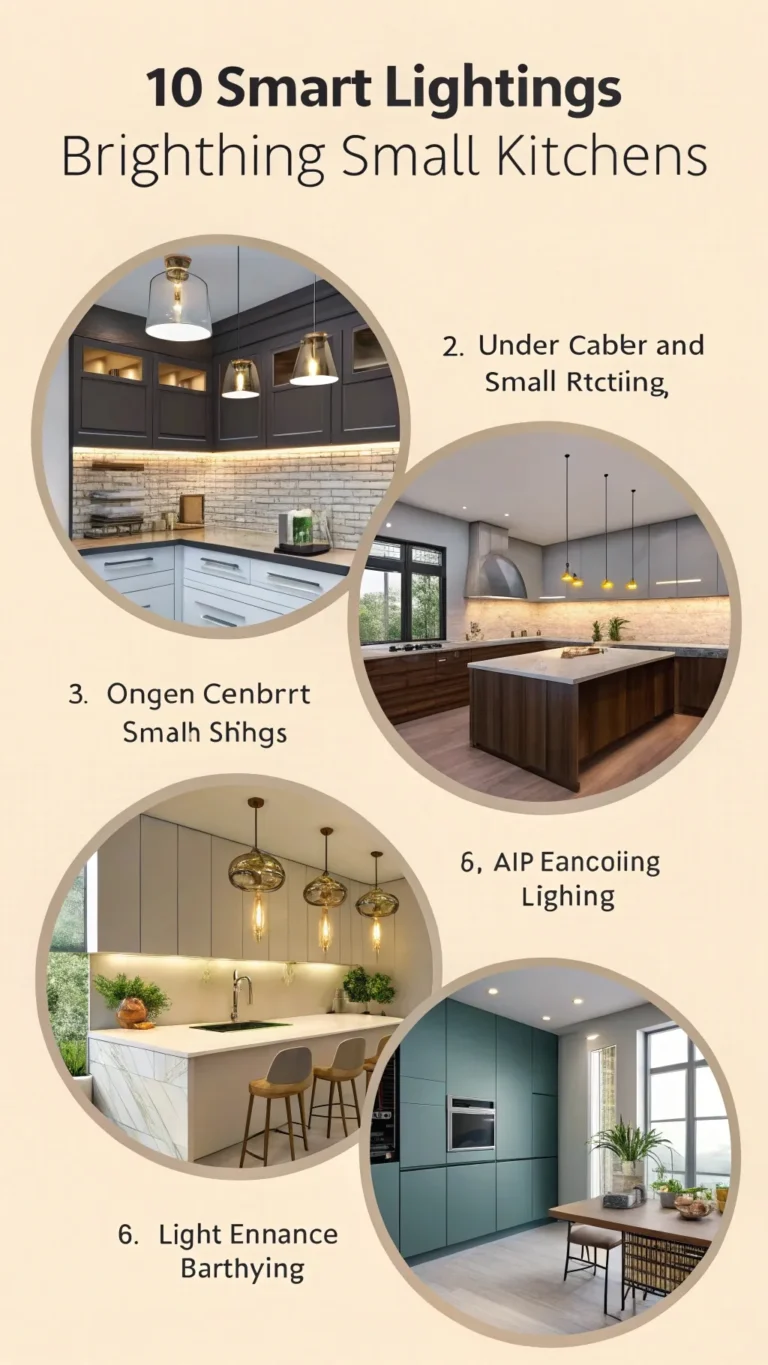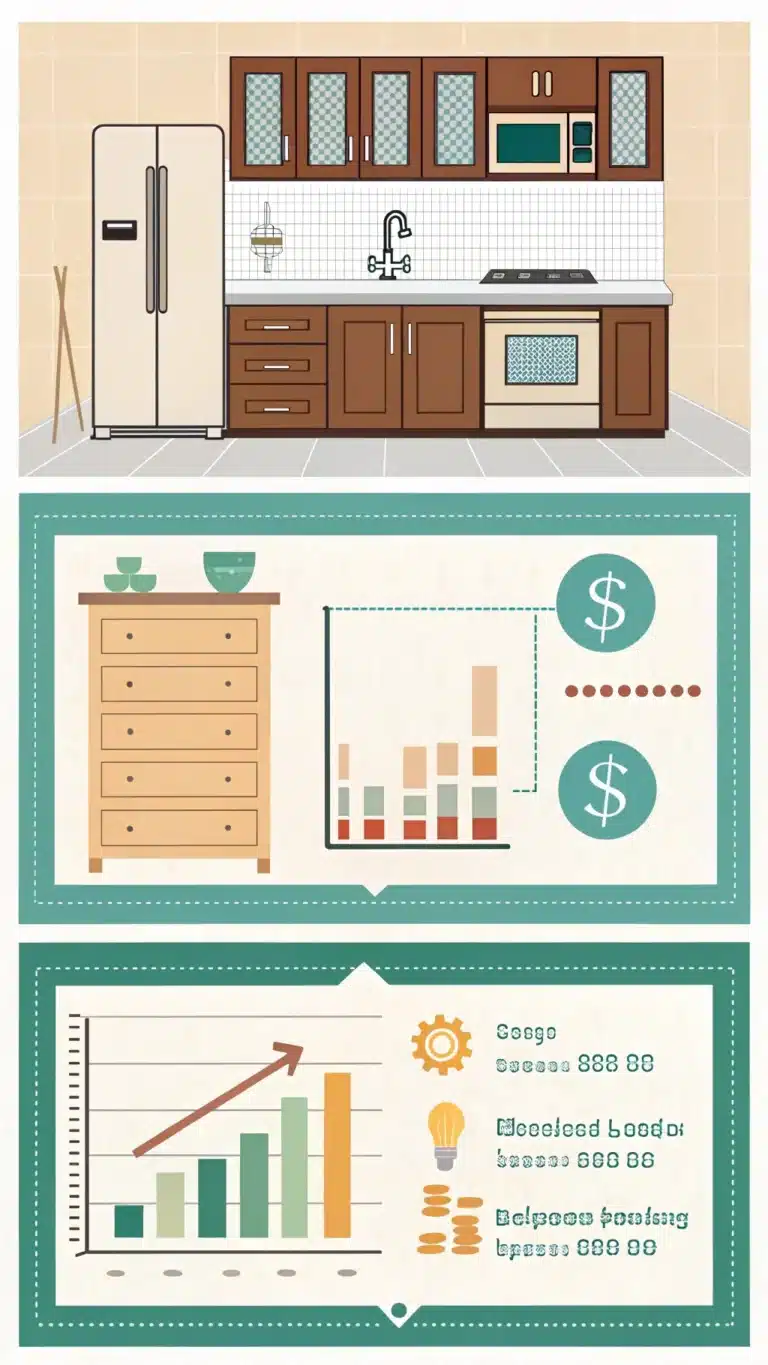Designing a small kitchen can feel tricky. Walls often get overlooked. Yet they hold the power to change a space’s mood. Adding texture to kitchen walls brings depth and personality. It turns a simple room into a welcoming area. This guide shows you the best small kitchen wall textures for 2025.
Texture can make your small kitchen look bigger or cozier. You will find options from painted surfaces to tile and wallpaper. Along with style, durability and ease of cleaning matter a lot. This article shares practical advice on picking the texture that fits your space and lifestyle. We explore top trends coming up next year too.
Discover 10 tried-and-true textures, how light plays off them, and tips for application. Let’s turn your kitchen walls into an exciting and functional feature.
Why Wall Texture Changes Small Kitchen Design
More Than Just a Surface: The Impact of Texture
Texture is a powerful design tool. Walls with texture break monotony. They add interest at eye level. Without texture, walls can feel flat and lifeless. Glossy finishes reflect light, making space brighter. Matte or rough finishes absorb light, adding warmth.
Think about how texture changes under different lighting. Natural light can highlight details or soften roughness. Artificial light can create shadows that add dimension. Texture helps define areas. For example, a textured backsplash marks the cooking zone clearly.
Architectural designer Lisa Hart says, “Texture brings rooms to life by engaging sight and touch. It adds layers that paint alone cannot.”
Using Texture to Make a Small Kitchen Look Bigger (or Cozier)
Subtle textures that reflect light help enlarge a kitchen visually. Smooth stucco or light Venetian plaster with gloss can do this. Choosing soft tones with slight texture can trick the eye into seeing depth.
On the other hand, rich textures like wood panels or stone can create a cozy atmosphere. This works well if you want your kitchen to feel snug and warm. Bold textures serve as a focal point, ensuring a small area feels intentional.
Designer Mia Chen notes, “Texture controls how a small kitchen ‘feels’—airy or intimate—without changing size.”
Practical Considerations for Kitchen Walls
Kitchens face spills, grease, and moisture daily. Wall texture must stand up well. Durability matters. Painted textures need to resist stains and be washable. Wallpaper in kitchens requires moisture resistance.
Some materials pose fire safety concerns. Always check if finishes near the stove meet local regulations. Many textured paints and tiles offer fire-resistant qualities.
Avoid delicate textures where water contact is frequent. A rough wall that absorbs moisture invites mold. Choose textures that clean easily. For example, vinyl wallpaper or glazed tile has strong resistance.
Tips:
– Think about your daily kitchen use and cleaning habits.
– Light affects texture’s look; choose by your natural light levels.
– Try samples at eye level before committing.
Exploring the 10 Best Wall Textures for Your Small Kitchen
Textured Paint & Plaster Finishes
Textured paint suits those who want affordable, approachable textures. You can get a unique look without high costs. Let’s cover the key types.
1. Stucco / Textured Paint Finishes
Common options include sand paint, orange peel, and knockdown textures. These finishes hide wall flaws well. They create lovely tactile surfaces adding character.
Pros: Cost-effective, DIY possible, variety of finishes.
Cons: Can be harder to clean, sometimes dated if overused.
A light stucco finish in pale colors helps walls feel bigger.
2. Venetian Plaster
A smooth plaster with subtle depth and a soft shine. It looks elegant with a slight sheen reflecting light.
Pros: Luxurious, durable, high-end style.
Cons: Pricey, needs a professional for best results.
Good for a classy kitchen that feels open and polished.
3. Rag Rolling and Sponging
These paint techniques add dynamic, soft texture. Roll or dab paint with cloth or sponge for a mottled effect.
Pros: Cheap, customizable, fun DIY method.
Cons: Risk of amateurish finish, depends on quality sealants.
Best for accent walls or niches.
4. Limewash and Mineral Paints
These give a cloudy, natural soft texture with a slightly chalky finish.
Pros: Eco-friendly, breathable, unique and subtle.
Cons: Limited colors, delicate surface.
Trending for 2025 with focus on natural, sustainable designs.
Tips: Always prime your walls well. Seal textured paint finishes for protection. Practice techniques first with test walls.
Wallpaper Wonders: Adding Pattern and Texture
Wallpaper is no longer just flat prints. Textured wallpapers add depth and style, perfect for small kitchens.
5. Textured Vinyl Wallpaper
Vinyl wallpapers come in textures like grasscloth look, linen, or faux stone. They handle kitchen messes better than fabric.
Pros: Durable, washable, large style range.
Cons: Needs smooth surfaces first, sometimes tricky to stick.
Great on backsplashes or small accent walls.
6. Peel-and-Stick Textured Wallpaper
This lightweight wallpaper sticks on easily and removes cleanly. Ideal for renters or those wanting quick refreshes.
Pros: DIY-friendly, affordable, no long-term commitment.
Cons: Less moisture-resistant, not ideal near stoves or sinks.
Use on walls away from cooking zones.
7. Grasscloth and Natural Fiber
Natural fibers add a warm, organic touch with visible texture.
Pros: Biophilic design trend, very stylish.
Cons: Sensitive to moisture and staining, pricey, difficult cleaning.
Best placed on walls not exposed to splashes.
Tips: Choose wallpaper that specifies kitchen or bathroom use. Use wallpaper as accent in small kitchens to prevent overwhelm.
Tile, Stone & Wood: Durable and Dimensional Surfaces
These materials offer long-lasting and eye-catching texture. They suit kitchens needing durability plus style.
8. Dimensional Tile
Tiles with 3D surfaces like waves or geometric shapes.
Pros: Stunning visual effect, very durable, easy wiping.
Cons: Expensive, grout can be a cleaning task.
Works well as feature backsplashes.
9. Brick or Stone Veneer
Thin slices of bricks or stone with natural rough texture.
Pros: Rustic charm, industrial appeal, solid.
Cons: Heavy, requires sealing, might be too much for tiny spaces.
Best on partial walls or islands.
10. Shiplap or Beadboard Paneling
Wood or MDF boards with grooves or beads add subtle texture.
Pros: Classic, versatile, adds architectural detail.
Cons: Needs sealing, grooves trap dust and grease.
Suitable for farmhouse or coastal looks.
Bonus Options:
Textured Subway Tile adds subtle relief with classic charm.
Concrete Finishes offer a cool, modern industrial vibe but need sealing and care.
Tips: Use these materials strategically to avoid heavy looks. Seal wood and stone surfaces well. Hire pros for full wall stone veneers or textured tile installs.
Choosing the Right Texture for Your Small Kitchen
Matching Texture to Kitchen Style
Rustic kitchens shine with brick or wood panels. Sleek modern kitchens benefit from smooth Venetian plaster or concrete. Traditional spaces glow with textured paint finishes or beadboard. Contemporary designs pair well with dimensional tiles.
These choices tie into small kitchen design ideas that blend texture, color, and lighting for harmony.
Budgeting for Wall Texture
Paint textures tend to cost less. Simple DIY stucco or sponge techniques run low on budget. Wallpaper varies; peel-and-stick options are affordable, while natural fiber types cost more. Tiles and stone rank higher in price and installation cost.
Factor in hiring professionals for plaster or tile work. Sometimes paying for expertise prevents costly mistakes.
Practicality & Maintenance
Durability rules in kitchens. Washable vinyl wallpaper and glazed tiles are easiest to maintain. Textured paint needs sealing to resist stains. Wood panels require periodic re-sealing.
Assess cleaning time and kitchen use. For active cooking zones, choose resilient finishes.
2025 Texture Trends
Sustainability leads. Materials like limewash paint and reclaimed wood grow in popularity. Biophilic elements such as grasscloth wallpaper bring nature indoors. Mixing textures—smooth walls with textured backsplashes—adds interest without clutter.
Minimalism favors subtle, light-reflective textures. Bold textures appear as accent features, sparingly used.
Step-by-step Texture Selection:
1. Check your kitchen style and mood.
2. Identify high moisture or high traffic walls.
3. Set a budget clearly.
4. Explore and shortlist from the best 10 textures.
5. Sample before deciding.
6. Decide on DIY or professional installation.
Frequently Asked Questions About Small Kitchen Wall Textures
What’s the best wall texture to make a small kitchen look bigger?
Choose light colors with subtle, smooth textures. Glossy Venetian plaster or light stucco helps reflect light and open the space.
Are textured kitchen walls hard to clean?
Smooth, sealed textures clean easily. Rough textures may trap grease. Sealing textured paint or choosing vinyl surfaces eases maintenance.
What are the most budget-friendly kitchen wall texture options?
Textured paint techniques like orange peel and peel-and-stick wallpapers cost less. They also support DIY projects.
Can I DIY kitchen wall texture?
Yes, surfaces like stucco paint and peel-and-stick wallpapers suit DIYers. Plaster or tile work usually needs professionals.
Is wallpaper durable enough for a kitchen?
Vinyl and treated wallpapers tolerate moisture and grease well. Avoid placing wallpaper directly behind stove or sink.
Transforming Your Small Kitchen with Texture
Texture on kitchen walls moves a room from plain to exciting. It adds style, charm, and helps shape how space feels. From cost-effective textured paint to upscale Venetian plaster or tile, many options exist.
These textures also affect room brightness, coziness, and usability. Keeping 2025 trends in mind, you get choices that fit modern tastes and eco-values.
Explore these ideas closely. Choose with your kitchen’s light, style, and use in mind. A well-planned wall texture becomes a centerpiece, enriching your small kitchen’s beauty and function. Textured walls aren’t just surfaces anymore; they are design features that speak volumes.
Consider consulting a designer or installer for complex finishes. Share your plans and results to inspire others on their kitchen makeover journey.
Alt Text Examples for Images:
– “Textured paint kitchen walls with soft stucco finish”
– “Shiplap paneling in small kitchen design”
– “Kitchen wallpaper small kitchen accent wall with grasscloth texture”
– “Kitchen wall texture making space look bigger with Venetian plaster”
– “Durable kitchen tile backsplash texture with 3D waves”
– “Comparison of kitchen wall finishes showing cost and durability”
Internal Links Suggested:
- Small Kitchen Lighting Guide
- Choosing the Right Paint Finish for Kitchens
- Best Peel-and-Stick Wallpaper for Renters
- Choosing the Right Kitchen Backsplash Material
- Guide to Kitchen Design Styles
External Links Suggested:
- HGTV’s Kitchen Design Tips
- Sherwin-Williams Guide to Textured Paint
- Daltile Guide to Textured Tile Options
With thoughtful texture, your small kitchen wall becomes a space of beauty and purpose. It shapes the room’s heart, inviting interaction and delight. Your kitchen deserves this attention. Start exploring today.






